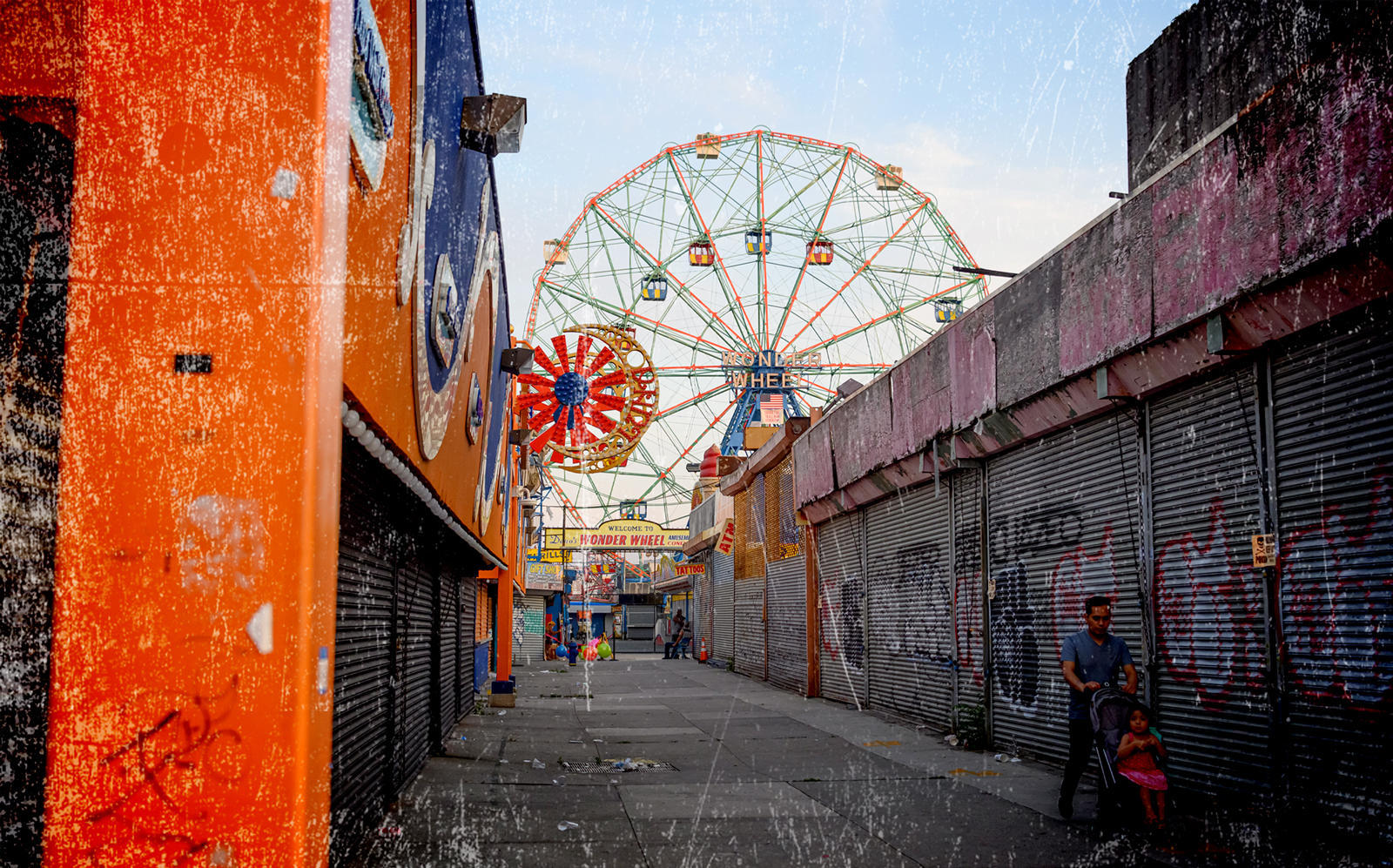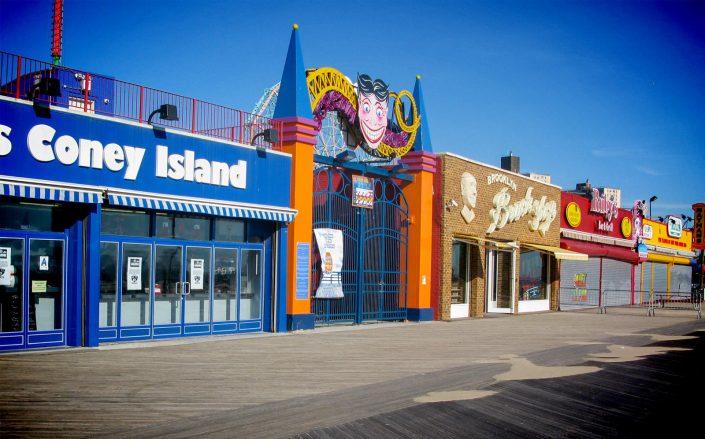 Q & A with Joe Sitt on his Coney Island deal with the city
Q & A with Joe Sitt on his Coney Island deal with the city
Trending
Lost summer, failed plan haunt Coney Island
Bloomberg aimed to make seaside area a year-round destination. Now businesses are struggling to imagine how to survive the winter.

Coney Island was eerily quiet this summer. The Cyclone did not clickety-clack, no screams pierced the salty air and tourists who normally roam the boardwalk were nowhere to be found.
The seasonal destination missed its season. Now businesses, like squirrels who failed to stash acorns for winter, are wondering how they will survive it.
“I didn’t do this year what I would do in a summer week,” said Jimmy Kokotas, the owner of Tom’s Restaurant. He is now over $300,000 in debt, largely because of rent.

Tom’s Restaurant (Getty)
The city and state did not let rides open this spring, fearing spread of the coronavirus. Yet amusement parks have had to continue paying rent and for maintenance of the park.
Coney Island restaurants, attractions and retailers depend on revenue from their busiest months to pay rent year-round. For amusements, the season begins in April and ends around Halloween.
That wasn’t supposed to be the case. In the 2000s, Mayor Mike Bloomberg planned to revitalize Coney Island and make it a year-round destination. So did Joe Sitt, a Coney Island landowner who had grown up nearby and made a fortune in real estate.
Read more
 Q & A with Joe Sitt on his Coney Island deal with the city
Q & A with Joe Sitt on his Coney Island deal with the city
 John Catsimatidis: I'm "taming" Coney Island
John Catsimatidis: I'm "taming" Coney Island
“Times will get good again, and times will get bad again, but I think it’s important to get Coney Island built to accommodate people who can’t afford the long vacation. And to get ready for the next cycle,” Sitt told The Real Deal in 2009.
But the two men had starkly different visions for the peninsula. While Bloomberg aimed to restore the kitschy, often edgy amusement area to its former glory, Sitt proposed Vegas-style hotels, apartments and shops. But he needed the mayor’s cooperation to make that happen.
In the end, Bloomberg won, and the city’s Economic Development Corporation bought 6.9 acres from Sitt’s firm, Thor Equities, for $95.6 million. The city rezoned the area in 2009 and some $400 million in public and private investment poured in.
That filled in many of Coney Island’s cavities. “We had blocks and blocks of empty lots,” said Alexandra Silversmith, the executive director of the Alliance for Coney Island. “It truly was a great place for rats to live.”
Some 35 new businesses have opened and the amusement district has been expanded and preserved. Apartment projects sprung up, including Ocean Dreams, John Catsimatidis’ pair of 21-story towers at 3514 Surf Avenue; Rubin Schron’s 40-story building at 532 Neptune Avenue; and 1709 Surf Avenue, a three-block development by Don Capoccia’s BFC Partners, Ron Moelis’ L+M Development Partners and Taconic Investment Partners.
There’s still work to be done, but talk of activating the area in the cold-weather months has receded.
“Coney Island hasn’t been for 120 years, and likely will not be for another 120 years, a 12-month destination,” said Michael Sorrell, co-owner of Ruby’s Bar & Grill, a restaurant that has been on the boardwalk since 1934.
The seaside neighborhood took a hit when Superstorm Sandy triggered heavy flooding in October 2009, but recovered. The pandemic has delivered an even more severe blow.
“Coney Island is still synonymous with summer,” Silversmith said. “What we were calling the Renaissance was really starting to finally take hold. And that has really just thrown everyone off.”
Landlords have raised rents — some observers say in anticipation of new residents who have yet to move in. But it remains a low-income community with a heavy concentration of public housing. Median gross rent in Coney Island increased from $880 in 2006 to $1,140 in 2018, according to the Furman Center. In 2018, nearly 31 percent of renter households in Coney Island were severely rent-burdened, meaning they spent more than 50 percent of household income on rent.
Silversmith also said that the neighborhood is missing healthful food options and other non-tourist amenities.
“The new influx of new residents isn’t happening on a very large scale, which I agree is not making it more of a year-round destination,” said Melissa Leifer, a real estate agent with Keller Williams.
At Luna Park, a local amusement park, a $20 million expansion was in the works when the pandemic hit, literally stopping the effort in its tracks. The expansion included plans for winter attractions. Now, the park is negotiating with the city for a lease extension through 2040, which it believes would help it endure, if not become a year-round attraction.
“There’s been investing and then, in this moment when we really need a lifeline, that’s [why] the public institutions are there,” said Alessandro Zamperla, president of Central Amusement International, which operates Luna Park. “[We can’t] go backwards because, if we go backwards, we will fall so fast and collapse.”
While his company leases three parcels of land from the city, it also acts as the landlord for many local businesses, including Tom’s and Ruby’s.
But many businesses fear they are already losing ground, which threatens the authenticity of Coney Island.
Kokotas fears that without relief, his debt will result in his business being replaced by one that hasn’t faced the same struggles, nor has stood with the area since 2012, when Tom’s opened.
“You lose people that have been involved in the community and care, and you don’t know if you’re just going to get pushed out for a franchise or what’s gonna happen. And it’s a shame,” Kokotas said.
Things might not be as bad as they seem. The vacancies could spark a much-needed drop in rents and attract new businesses and residents. The result might not be what Bloomberg or Sitt expected, but it could be a mix of both, according to Leifer.
“It’ll change and adapt just as the entire city has since its inception,” Leifer said. “Is that a good thing or is that a bad thing? I don’t really think that it’s my right to judge that.”




